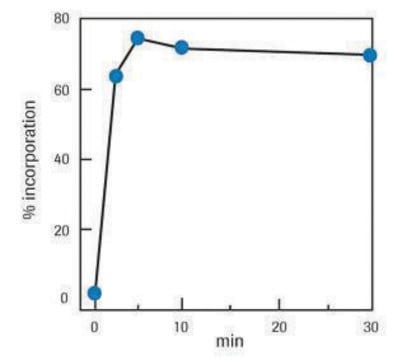11004760001
Roche
Random Primed DNA Labeling Kit
Sinonimo/i:
nucleic acid labeling
Scegli un formato
578,00 €
Scegli un formato
About This Item
578,00 €
Prodotti consigliati
impiego
sufficient for 50 labeling reactions
Livello qualitativo
Produttore/marchio commerciale
Roche
Temperatura di conservazione
−20°C
Categorie correlate
Descrizione generale
Specificità
Applicazioni
Confezionamento
Nota sulla preparazione
To avoid pipetting inaccuracy, due to low volumes, prepare a stock mix of unlabeled dNTPs. Aliquots should be stored at -15 to -25 °C. Avoid repeated freezing and thawing.
- dATP, dGTP, dTTP mixture:
For one labeling reaction pipette:
1 μl dATP
1 μl dGTP
1 μl dTTP to a reaction vial
Preparation of DIG Stock Mix
To avoid pipetting inaccuracy due to low volumes, prepare a DIG stock mix. To do this, mix digoxigenin-11-dUTP [3 mM] and dTTP (vial 5) 1:1. For each labeling reaction 1.6 μl are used.
Altre note
Solo come componenti del kit
- Control DNA lambda, 20 μl 12.5 µg/ml
- dATP, 50 μl 0.5 mM
- dCTP, 50 μl 0.5 mM
- dGTP, 50 μl 0.5 mM
- dTTP, 50 μl 0.5 mM
- Hexanucleotide mixture in 10x reaction buffer (100 μl)
- Klenow enzyme, labeling grade (100 U)
Codice della classe di stoccaggio
12 - Non Combustible Liquids
Classe di pericolosità dell'acqua (WGK)
WGK 1
Punto d’infiammabilità (°F)
does not flash
Punto d’infiammabilità (°C)
does not flash
Scegli una delle versioni più recenti:
Possiedi già questo prodotto?
I documenti relativi ai prodotti acquistati recentemente sono disponibili nell’Archivio dei documenti.
I clienti hanno visto anche
Il team dei nostri ricercatori vanta grande esperienza in tutte le aree della ricerca quali Life Science, scienza dei materiali, sintesi chimica, cromatografia, discipline analitiche, ecc..
Contatta l'Assistenza Tecnica.









